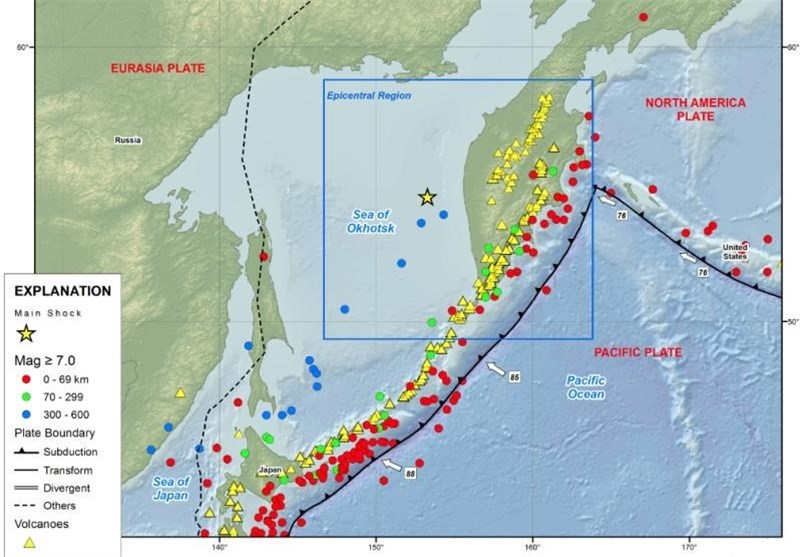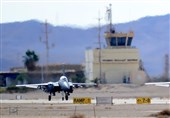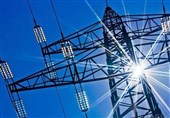Seismologists Puzzle over Largest Deep Earthquake Ever Recorded
TEHRAN (Tasnim) - A magnitude 8.3 earthquake that struck deep beneath the Sea of Okhotsk on May 24, 2013, has left seismologists struggling to explain how it happened.
At a depth of about 609 kilometers (378 miles), the intense pressure on the fault should inhibit the kind of rupture that took place.
"It's a mystery how these earthquakes happen. How can rock slide against rock so fast while squeezed by the pressure from 610 kilometers of overlying rock?" Thorne Lay, professor of Earth and planetary sciences at the University of California said.
Lay is coauthor of a paper, published in the September 20 issue of Science, analyzing the seismic waves from the Sea of Okhotsk earthquake. He revealed that this was the largest deep earthquake ever recorded, with a seismic moment 30 percent larger than that of the next largest, a 1994 earthquake 637 kilometers beneath Bolivia.
Deep earthquakes occur in the transition zone between the upper mantle and lower mantle, from 400 to 700 kilometers below the surface. They result from stress in a deep subducted slab where one plate of Earth's crust dives beneath another plate. Such deep earthquakes usually don't cause enough shaking on the surface to be hazardous, but scientifically they are of great interest.
The energy released by the Sea of Okhotsk earthquake produced vibrations recorded by several thousand seismic stations around the world. Scientists determined that it released three times more energy than that of the 1994 Bolivia earthquake, comparable to a 35 megaton TNT explosion. The rupture area and rupture velocity were also much larger. The rupture extended about 180 kilometers, by far the longest rupture for any deep earthquake recorded, Lay said. It involved shear faulting with a fast rupture velocity of about 4 kilometers per second (about 9,000 miles per hour), more like a conventional earthquake near the surface than other deep earthquakes. The fault slipped as much as 10 meters, with average slip of about 2 meters.
"It looks very similar to a shallow event, whereas the Bolivia earthquake ruptured very slowly and appears to have involved a different type of faulting, with deformation rather than rapid breaking and slippage of the rock," Lay said.
"In the Bolivia event, the warmer slab resulted in a more ductile process with more deformation of the rock," he added.
The Sea of Okhotsk earthquake may have involved re-rupture of a fault in the plate produced when the oceanic plate bent down into the Kuril-Kamchatka subduction zone as it began to sink. But the precise mechanism for initiating shear fracture under huge confining pressure remains unclear. The presence of fluid can lubricate the fault, but all of the fluids should have been squeezed out of the slab before it reached that depth.
"If the fault slips just a little, the friction could melt the rock and that could provide the fluid, so you would get a runaway thermal effect. But you still have to get it to start sliding," Lay said. "Some transformation of mineral forms might give the initial kick, but we can't directly detect that. We can only say that it looks a lot like a shallow event."





